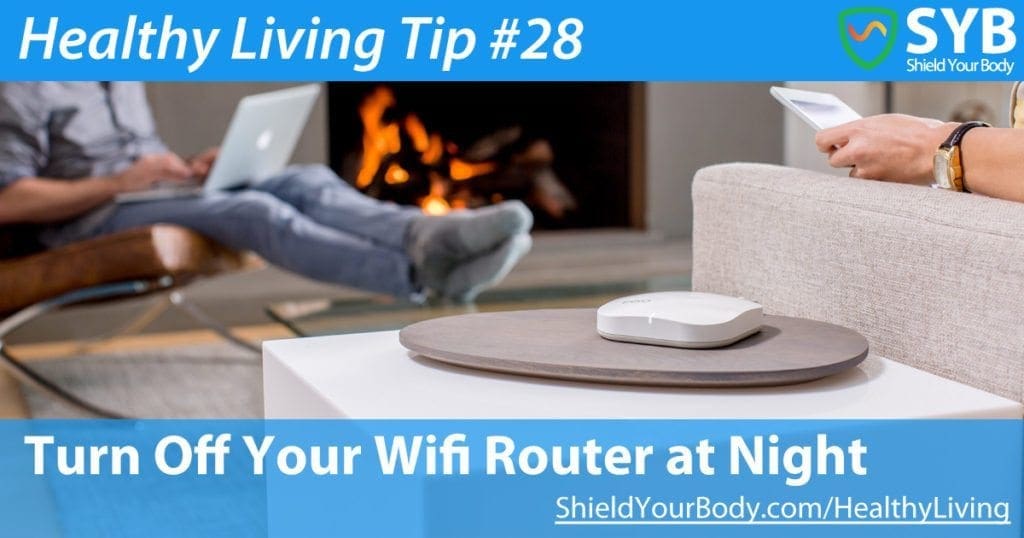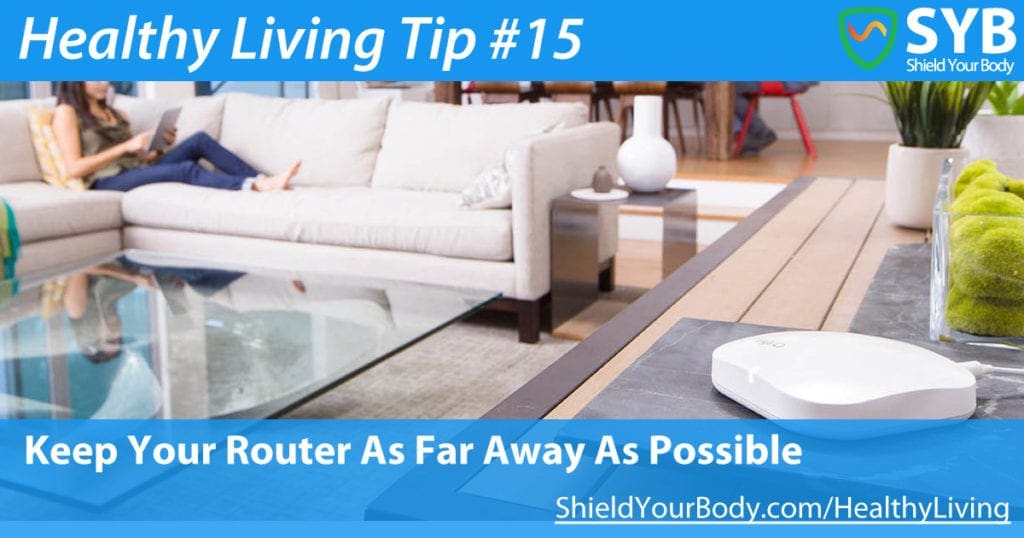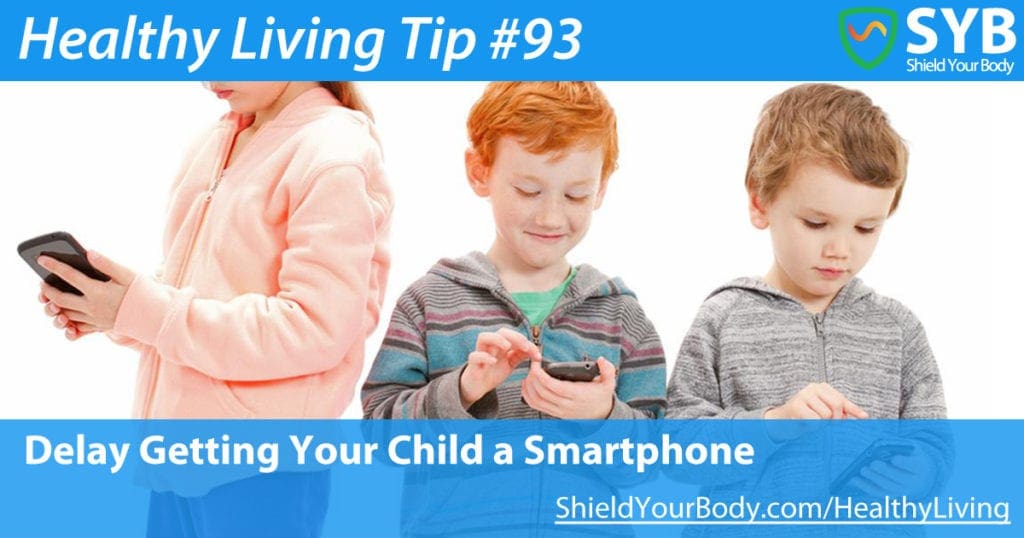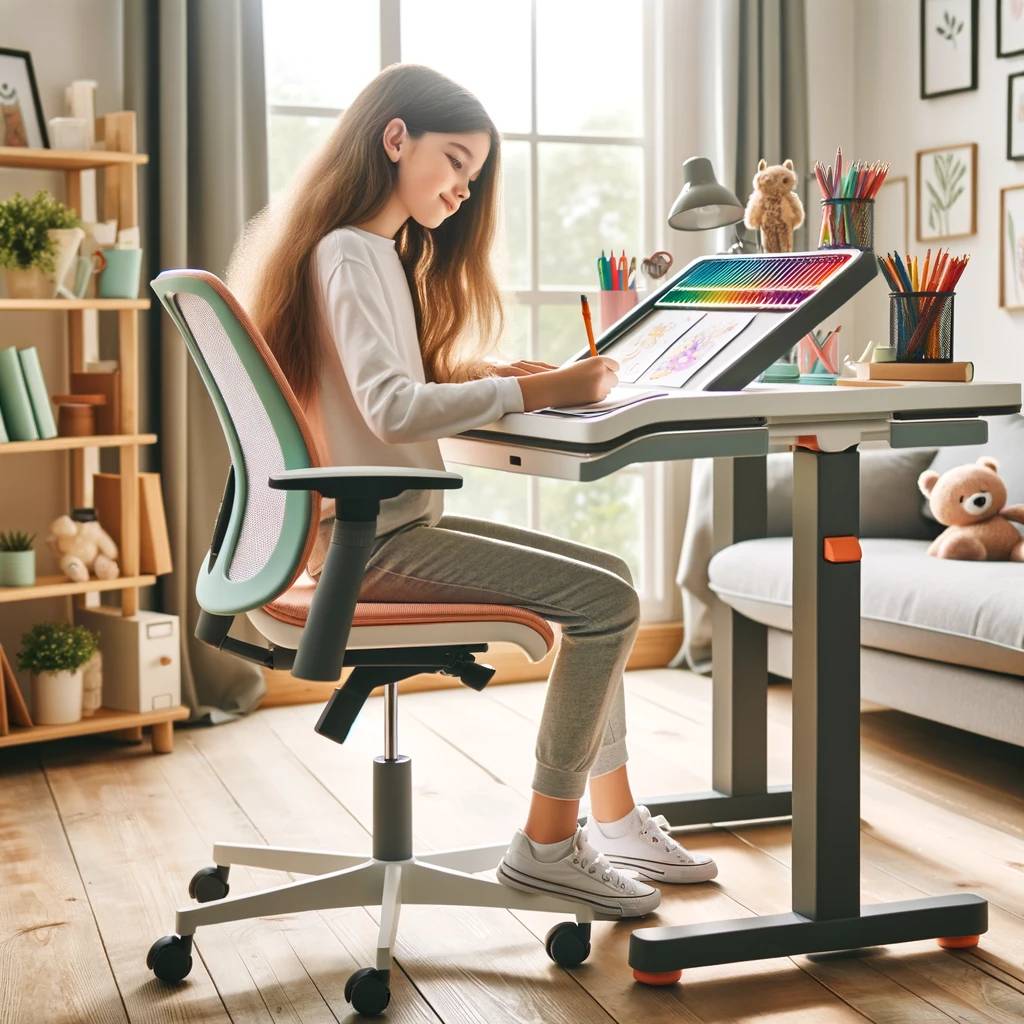With all the school shut downs, children are spending much more time at home than under normal circumstances. And more parents are participating in home schooling. As children spend more time at home, and with the world facing a viral pandemic, many parents are increasingly aware of and concerned about maximizing their children’s health, and minimizing their children’s health risks from EMF, under these conditions. Because of this, the Russian Ministry of Health, along with the Russian Committee to Protect Against Nonionizing Radiation"Nonionizing radiation" refers to a type of electromagnetic radiation that does not carry enough energy to ionize atoms or molecules, meaning it can't remove tightly bound electrons from the orbit... More (RusCNIRP) released new guidance for parents on ways to protect their children’s health at home and while home schooling.
And I thought the recommendations were very useful, providing much better and healthier guidance than is offered by regulatory bodies in the United States, and so I wanted to share them with you, along with some additional explanation. Which brings us to SYB Healthy Living Tip #2: Protect Children from EMF at Home.
As you’ll see, some of these recommendations have the goal of reducing your child’s exposure to EMF radiation"Radiation" in the context of Electromagnetic Fields (EMF) refers to the process by which energy is emitted and transmitted through space or a material medium in the form of electromagnetic... More. And some are focused on more general health. But all provide useful guidance and direction for parents.
Table of Contents
ToggleEMF Radiation Protection & Safety for Children at Home
Use Wired Networks
Of course, parents are making increased use of the internet to educate their children. It’s by far the most convenient source for finding information, guidance, learning materials and support from teachers and other parents.
This means their internet usage is increasing, and the WiFi will stay on and be utilized for longer than usual.

Want to Slash Your EMF Health Risks?
Good! Learn the one small change you should make right now.
And, of course, WiFi is incredibly convenient. You can access all that great information from any number of devices– including a laptop, computer, tablet, phone, ereader, and/or television– from anywhere in your house.
WiFi also has a downside. Continuous exposure to WiFi can be harmful to you and your children and it can be the source of various diseases.
WiFi routers and devices communicate using radio waves (also sometimes called microwaves– yes, just like your microwave oven uses) to provide high-speed internet connection. And many studies suggest that WiFi radiation has the potential to initiate conditions like oxidative stress and neuropsychiatric effects. It’s also why the World Health Organization lists it as a Class 2B Carcinogen.
Not only this, but experts also say that prolonged exposure to WiFi can disturb your sleep pattern and can create other mental health problems.

WiFi is not good for health, but we cannot quit using the internet completely either.
So, the best alternative is using a wired internet connection, with ethernet cables.
It may seem impossible to quit WiFi because of its remarkable features. But, removing WiFi and switching to a wired connection is a healthier choice for you and your children.
In addition, switching to a wired connection is not only healthier but also safer in terms of internet security. WiFi networks are much more easily hacked than wired networks.
And, you will also experience increased internet speed when you connect your computer directly to the internet using an ethernet cable. Because fiber cables provide faster connections than wireless.
Understandably, using a wired connection may not be an option for everyone. If this is the case for you, make sure to keep the WiFi point at least 15 feet (5 meters) away from your workspace. The reason behind this is, the strength of radio waves weakens exponentially as it travels further from the starting point.

The 5 meters distance will not completely eliminate the risk of WiFi radiation, but it will surely help in reducing high EMF exposure. Every additional inch of distance you create between your child and your WiFi router reduces their health risks.
Exclude Electronic Gadgets
Parents tend to give their children high-tech gadgets like mobile phones, laptop computers, and tablets, at a very young age. This allows their children to use these gadgets to them learn new things and increase their intelligence. And it also helps distract the children and prevent them from bothering their parents so much.
A research team at the University of Iowa found that 90% of children under 2 years old have the moderate ability to use a tablet. That’s a tremendously high percentage of very young children who already know how to use these devices– some, probably better than their parents do!
Even though it may seem like children are getting smarter, as they can use sophisticated technology at such a young age, the long-term effects can be alarming.
Medical experts say that usage of technology at such a young age can result in technology addiction, sleep deprivation, slow reflexes, decreased learning ability, and other medical conditions.
Parents should not allow children under six years to use technological gadgets, even for educational purposes. This is because ages zero to six are the most important for their development, and the virtual world distracts from real-world experiences.
It is also necessary to limit and monitor the usage of tech gadgets in children who are in their mid-years (which is between 6-12 years) and teens.

This is the basis of the Wait Until 8th movement (which encourages parents not to get their children smartphones until 8th grade), and it’s also why SYB’s Healthy Living Tip #93 is “Delay Getting Your Child a Smartphone.”
In terms of education, studying on a tech gadget is now common, and children prefer using a tablet or a laptop rather than reading books and taking notes with a pen and paper. So when homeschooling your child, of course you are going to use technology.
But you can make a positive change by limiting your child’s screen time and teaching them the value of real world, physical experiences.
So, when you’re teaching your children at home, if you can perform a lesson or an assignment without using a computer or gadget, do that.
Limiting the usage of technological gadgets will reduce EMF exposure, prevent eye damage, and, most importantly, your children will grow learning about the real world and not the virtual one.
Limit Screen Time
A 2019 study published by Common Sense Media found that the average child between six and 12 years spends almost five hours each day watching things on a screen.
The same study also found that this number is higher in teens, where the average daily screen time is over 7 hours.
This screen time includes watching TV, playing video games, and surfing the internet.
Letting your child spend this much time on screen can have a negative impact on your child’s physical and mental development.
The lockdowns will increase the amount of time children spend glued to their screens, as they will use electronic gadgets for educational and entertainment purposes.
So be sure to limit their screen time because watching a screen for a long time may cause things like:
- Sleep Disruption: A good night’s rest is crucial for mental and physical development in children. Spending hours and hours on screen can disturb their sleep cycle, and they will not be able to rest properly.
- Social Awkwardness and a drop in emotional intelligence (or EQ): Children who spend most of their time in a virtual world may find it harder to interact with others and understand emotions. This will lead to frequent social awkwardness and Social Anxiety. A research group from the University of California said that lesser screen time increases the ability to read emotions in children.
- Lesser Physical Activity: Children who spend most of their day with electronic gadgets will have lesser physical activity, and it leads to obesity in a later stage of their life.
Medical professionals from the American Association of Pediatrics say the screen time should not be more than one hour for children between the age of three and five. And the screen time in children aged between ages six and 12 should not exceed 2 hours a day.
The AAP also says that there should be no screen time at all for children under 2 years.
There are certain things you can do in your quest to reduce your child’s screen time. For example, you can:
1) remove electronic gadgets from their room
2) schedule a strict screen time limit
3) offer alternatives to tech entertainment like books, board games and outdoor activities
Limit Headphone Use
Headphones are very useful– even more so when so many of us are at home with other family members. No one wants to listen to what everyone else is listening to.
A lot of people prefer using bluetoothFrom the perspective of someone concerned about the health effects of electromagnetic radiation, understanding Bluetooth radiation is crucial, especially in our increasingly wireless world. Bluetooth technology, ubiquitous in our daily... More headphones because it is comfortable and convenient. However, using a bluetooth headphone for a long time can have negative health effects.
Bluetooth headsets use EMF radiation to transfer sound from your mobile or computer to your headphones. While these devices produce low electromagnetic radiation, it can still negatively impact your health. This is because when you place a Bluetooth device on your ear, it exposes your brain directly to the harmful EMF radiation.
In comparison, wired headphones are way safer to use, as it uses a wire channel to transfer the sound.
Wired headphones also emit radiation, but it does it on a smaller scale than the Bluetooth headphones. If you want to completely eliminate the radiation, consider using anti-radiation headsets.
Radiation concerns aside, another effect of using headphones is hearing loss.
In fact, according to a 2011 study published in the Journal of the American Medical Association, headphone use in adolescents and young adults has led to a major increase in the incidence of hearing loss.
And this is particularly important to protect against in children, because they have many more years to live and the damage accumulates over time.
So, when your child is studying online, make them play the sound on the speaker instead of using the headphones as much as possible.
And when your child does use headphones, make sure to limit the volume. Experts say that the usage of headphones in children should not be longer than 1 hour on less than 60% volume, anything beyond that is harmful.
Other Ways to Improve Your Child’s Health and Safety When Homeschooling
Adjust Your Child’s Working Environment
If your child is studying on a tablet or a laptop, make sure to follow necessary measures to make this distance learning safer. Here are a few ways that you can achieve increased safety in your child’s working environment:
- Place the tablet on a table with a stand at an angle of 30 degrees;
- If you’re using a laptop, make sure to keep it on the table and do not let them use it on their lap;
- Make sure that the distance between their eyes and the screen is at least 20 inches (50 centimeters);
- Make sure that the child is not lying down on the bed while using their gadgets and devices;
- If your child is sitting on a chair, make sure that the height of the table and chair corresponds to your child’s height.
Another thing that you should consider is the source of light. The main source of light should be coming from the side and not from behind or in front of your child. Also, make sure that the brightness of the screen approximately corresponds to the intensity of the light source. This will help reduce eye strain in your child.
Once you adjust the working condition, you can begin your study session.
Add Breaks
As you teach your child, or your child studies on his or her own, be sure to create breaks, and not allow them to study continuously for extended periods.
A 2016 study demonstrated that continuous study session reduces the ability to focus in children, and increases their propensity for distraction.
Without breaks, chances are that your child will be distracted during 70% of the study session and won’t focus sufficiently or properly on what you’re teaching.
Educators around the world have noticed that children can focus more if you give them several 10 minutes breaks instead of one 30 minutes break.
The benefit of adding breaks during the sessions not only helps them focus more, but it will also reduce the risk of muscle stiffness, body pain, and exhaustion.
Here is some information by health experts on distributing the breaks during the learning session:
- 30 minutes of break for every 10 minutes of work for children aged 6-8 years.
- 20 minutes of break for every 10 minutes of work for children aged 8-12 years.
- 60 minutes of break for every 30 minutes of work for children aged 12-15 years.
- 45 minutes of break for every 45 minutes of work for children aged 15-18 years.
Studying is important, but breaks are essential as well.
Your children can only focus for so long before getting completely exhausted. Author Alan Cohen famously said, “There is virtue in work, there is virtue in rest. Use both and overlook neither”.
Eye Gymnastics
The feeling of fatigue and tiredness is common while studying for a long time, as the eyes and brain continuously work during the session. To prevent this from happening, you can make your child perform eye gymnastics.
Eye gymnastics is a method of relaxing your eyes after focusing on something for a long time.
How to do eye gymnastics?
- Sit straight on a chair>>Rub your palms and heat them>>Place both elbows on the table>>Cover both eyes with your palms>>Do this for 1-2 minutes.
- Stand straight>>Look to your left without turning your head and focus on what you see>>Look to the right without turning your head and focus on what you see>>Do this five times.
- Stand straight>>Look up without tilting your head>>Focus on what you see>>Look down without tilting your head>>Focus on what you see>>Do this 5 times.
- Practice the 20-20-20 method. If you’re working on a computer screen look away from the screen every 20 minutes to something that is 20 meters away for 20 seconds.
For more information on eye exercises, check out this site.
Physical Exercise
It’s not just your child’s eyes that need exercise. Their entire bodies do, as well. Study sessions can be physically exhausting. So make sure that your child is exercising between sessions, so they don’t feel fatigued.
It’s important to realize that these exercises don’t need to be intense in order for your child to benefit from them. In fact, here are a few examples of very simple exercises that will help:
- Stand straight>>Turn your body to the right slowly without turning your legs>>Turn your body to the left without turning your legs>>Do this six times.
- Stand with your head and chest facing forward>>Place your feet slightly wider (so they are shoulder width apart)>>Sit down like you’re sitting on an imaginary chair>>Stand up from the imaginary chair>>Repeat 10 times.
- Stand straight>>Stretch your hands wide>>Turn right without turning your legs>>Turn Left without turning your legs>>Repeat 6 times.
Ventilate
We’ve recently all become much more aware of the importance of sanitizing our bodies and our environments. And it’s important to ensure your child’s study environment is as clean and sanitary as possible, to protect their health and also to improve their academic performance.
While we often think of sanitizing our bodies and other surfaces like counter-tops, it’s also important to clean the air.
An average room is filled with carbon dioxide (or CO2) and dust particles, which can harm studying as it may cause headaches, dizziness, and allergies. So make sure to ventilate the room in which your child studies 15 minutes before the study session.
Follow these simple steps:
- Open the windows
- Place a fan in front of the windows facing the room, and place another fan pointing out of another window or the door. Turn on both fans.
- Turn on the exhaust fan (if you have one)
- If the room doesn’t have windows, turn on the air conditioner
Ventilating will free the room from dust and carbon dioxide, and it will be easier for your child to focus on learning.
Sanitize
Once you ventilate the room, you’ll want to properly sanitize the items that your child will use in their study session.
Do these things to make your sessions cleaner and healthier:
- Wash your hands and your child’s hands with soap for 20 seconds. And make sure your child washes his or her hands before and after each session using a keyboard or other digital device.
- Disinfect the keyboard every day with antiseptic before starting work.
- Treat your monitor with an antiseptic agent.
- Wipe your Tablet and smartphones with an antiseptic agent.
- Clean the floor with antiseptic liquid.
- Have a sanitizer handy and use it every 1-2 hours.
Simple & Free Ways to Protect Your Child’s Health
The lockdowns have forced many of us to change our daily lives and our every day habits. And as we all work through this situation, it is important to remember there are ways to protect your child, and reduce his or her health risks as they spend more time at home. And, even better, almost all of these ways are free– they just require a little attention.
As you can see from this post, there are a lot of ways that you can work to improve your child’s health– and with your children at home during this lockdown, it’s a fantastic opportunity to provide them with a safer, healthier and more productive learning environment than they can get at a school.
And while some of these tips, like sanitizing your work environment, are things that many of us are focusing on during this quarantine, it’s also important to remember to take some practical steps to reduce your child’s exposure to EMF radiation.
For more practical and easy ways to protect your child from harmful EMF radiation, learn why I always say that the best EMF protection is free.









